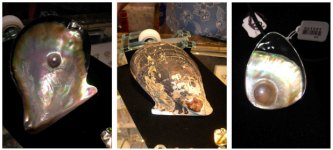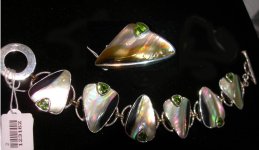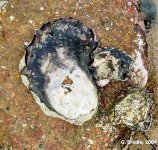SteveM
Well-known member
- Joined
- Jan 29, 2007
- Messages
- 2,113
Passing through Ft Lauderdale on business I wandered into the jewelry store next to the hotel on Las Olas Blvd and saw a shell and numerous mabe pieces from the 'black lip oyster', genus saccostrea echinata. This is an edible rock oyster native to NE Australia, with a brilliant mother of pearl shell nacre of significant beauty, ranging silver/white/cream with notable iridescence. The origin was announced to be 'near Hawaii.'
A search of Pearl-Guide forums does not yield prior mention of this oyster, or of any pearl or MOP products obtained from it. I can't find an internet photo and may just have to purchase a piece to post here?unless someone knows something and can fill us in?
Steve
A search of Pearl-Guide forums does not yield prior mention of this oyster, or of any pearl or MOP products obtained from it. I can't find an internet photo and may just have to purchase a piece to post here?unless someone knows something and can fill us in?
Steve



